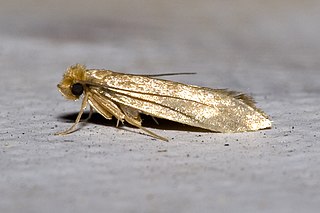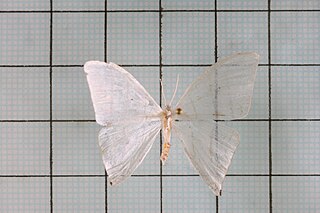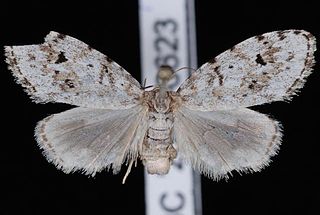
Lepidoptera is an order of insects that includes butterflies and moths. About 180,000 species of the Lepidoptera are described, in 126 families and 46 superfamilies, 10 percent of the total described species of living organisms. It is one of the most widespread and widely recognizable insect orders in the world. The Lepidoptera show many variations of the basic body structure that have evolved to gain advantages in lifestyle and distribution. Recent estimates suggest the order may have more species than earlier thought, and is among the four most speciose orders, along with the Hymenoptera, Diptera, and Coleoptera.

The de Havilland DH.82 Tiger Moth is a 1930s British biplane designed by Geoffrey de Havilland and built by the de Havilland Aircraft Company. It was operated by the Royal Air Force (RAF) and other operators as a primary trainer aircraft. In addition to the type's principal use for ab initio training, the Second World War had RAF Tiger Moths operating in other capacities, including maritime surveillance and defensive anti-invasion preparations; some aircraft were even outfitted to function as armed light bombers.

Norman Barnett Tindale AO was an Australian anthropologist, archaeologist, entomologist and ethnologist.

Gracillariidae is an important family of insects in the order Lepidoptera and the principal family of leaf miners that includes several economic, horticultural or recently invasive pest species such as the horse-chestnut leaf miner, Cameraria ohridella.

Tineola bisselliella, known as the common clothes moth, webbing clothes moth, or simply clothing moth, is a species of fungus moth. It is the type species of its genus Tineola and was first described by the Swedish entomologist Arvid David Hummel in 1823. The specific name is commonly misspelled biselliella – for example by G. A. W. Herrich-Schäffer, when he established Tineola in 1853.

Schinia, commonly called flower moths, is a large genus of moths belonging to the family Noctuidae. The genus has a Holarctic distribution with the vast majority of species being found in North America, many with a very restricted range and larval food plant.

Platytes alpinella is a species of moth of the family Crambidae described by Jacob Hübner in 1813. It is found in Europe, the area surrounding the Caucasus and the eastern part of Russia.

Platytes is a genus of moths of the family Crambidae.

Ditrigona is a genus of moths belonging to the subfamily Drepaninae. The genus was erected by Frederic Moore in 1888.

Platytes cerussella is a species of moth in the family Crambidae. It is found in almost all of Europe.
The following are the regional Lepidoptera lists by continent. Lepidoptera is the insect order consisting of both the butterflies and moths.

Clemensia albata, the little white lichen moth, is a moth of the family Erebidae. It was described by Alpheus Spring Packard in 1864. It is found in eastern North America, west across boreal Canada to south-eastern British Columbia. The range extends along the Pacific Coast south to Monterey Bay in west-central California. The habitat consists of moist forests, including coastal rainforests, oak woodlands and mixed hardwood forests.
Spilosoma dubia, the dubious tiger moth, is a moth in the family Erebidae. It was described by Francis Walker in 1855. It is found from south-eastern Canada west to Alberta and in the eastern United States. The habitat consists of aspen parkland and southern boreal forests.
Platytes ornatellus is a moth in the family Crambidae. It was described by John Henry Leech in 1889. It is found in the Russian Far East, China, Korea and Japan.
Platytes platysticha is a moth in the family Crambidae. It was described by Turner in 1939. It is found in Australia, where it has been recorded from Tasmania.
Platytes poliopepla is a moth in the family Crambidae. It was described by Oswald Bertram Lower in 1905. It is found in Australia, where it has been recorded from Victoria.
Platytes strigatalis is a moth in the family Crambidae. It was described by George Hampson in 1900. It is found in the Russian Far East.
Ditrigona platytes is a moth in the family Drepanidae. It was described by Wilkinson in 1968. It is found in China.
Nites betulella, the black-dotted birch leaftier moth, is a moth in the family Depressariidae. It was described by August Busck in 1902. It is found in North America, where it has been recorded from Nova Scotia, southern Canada, the north-eastern United States, British Columbia and Wisconsin.









